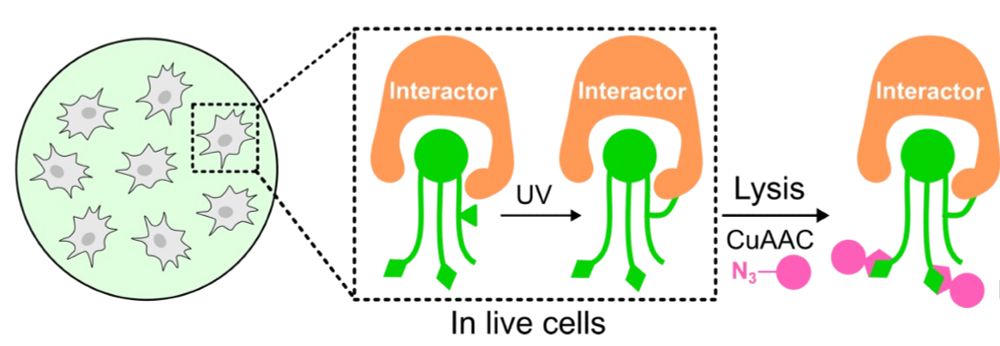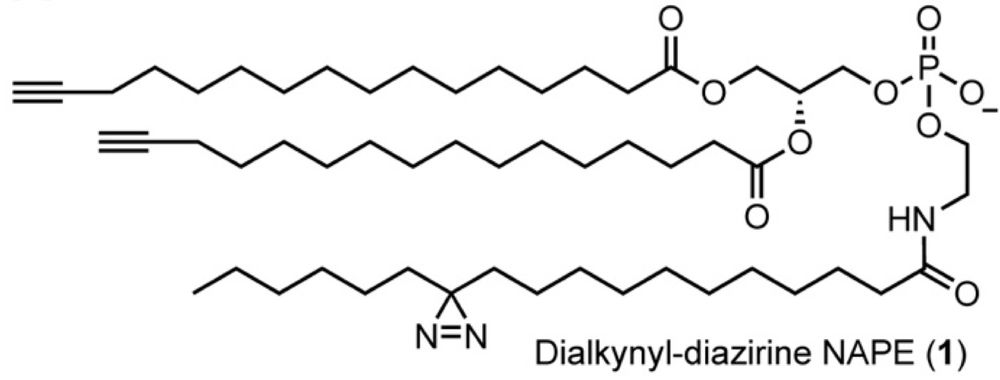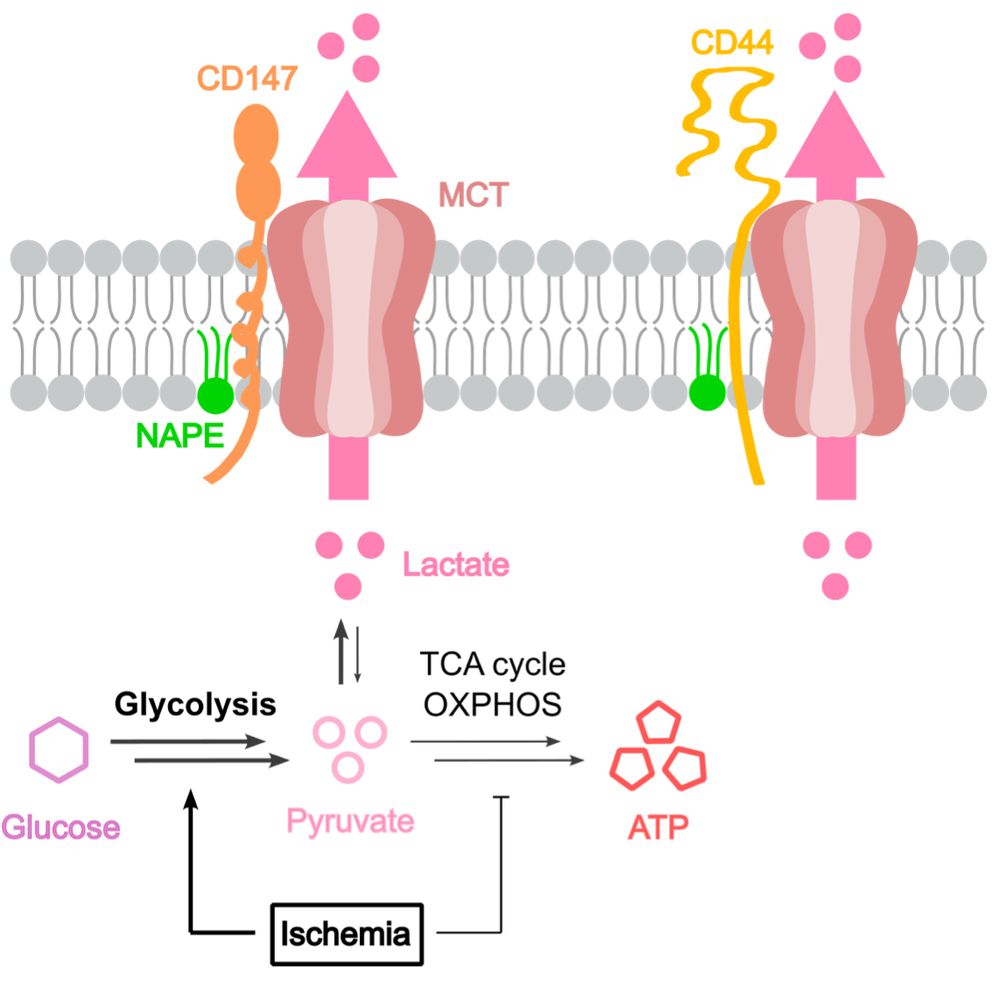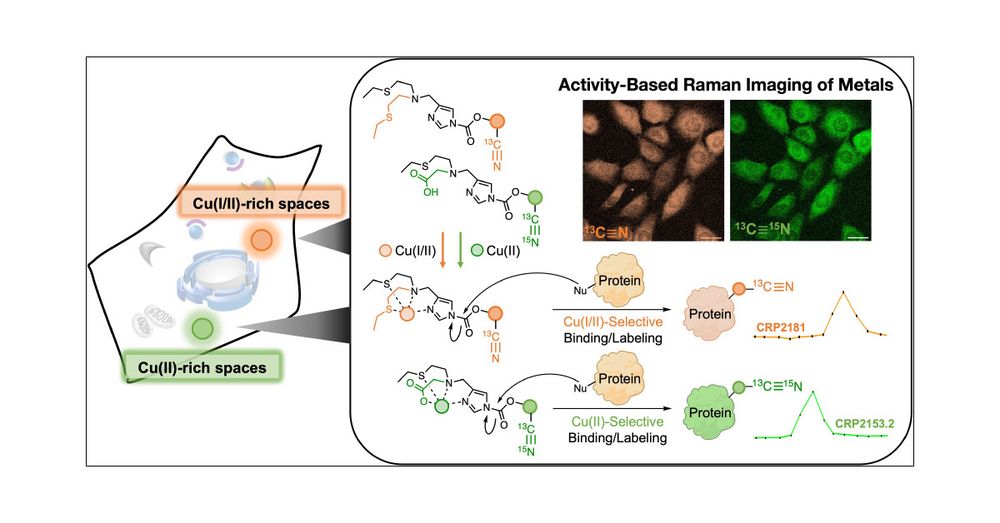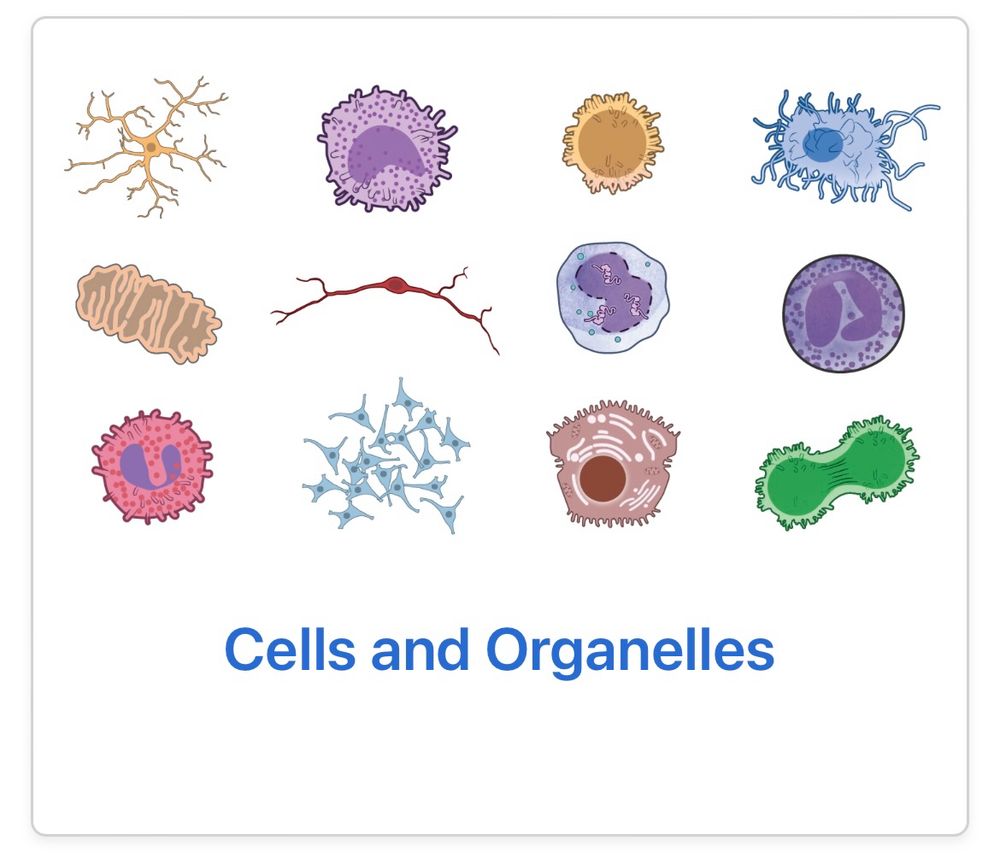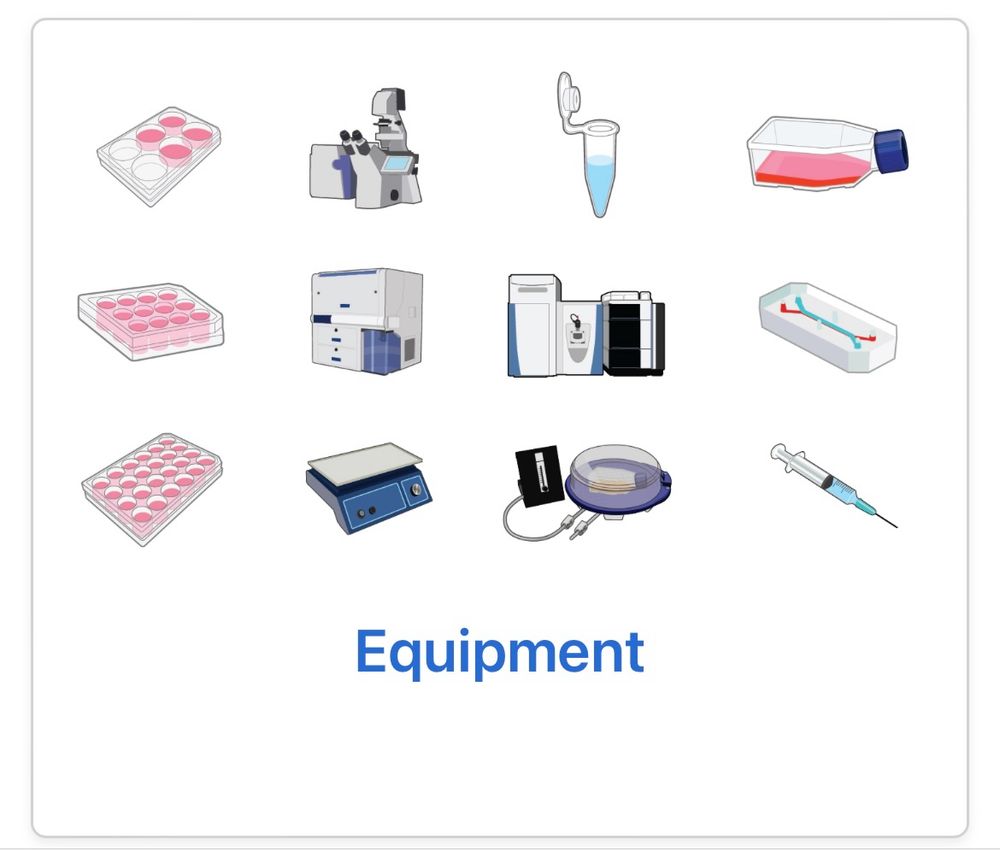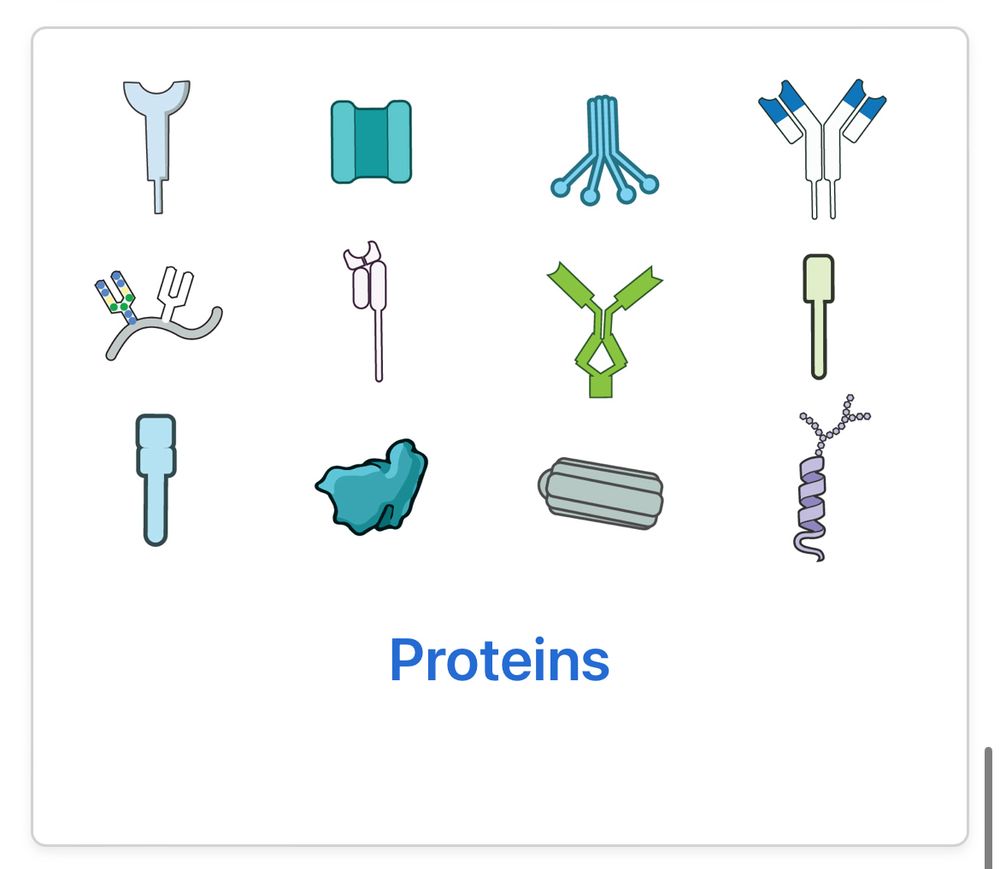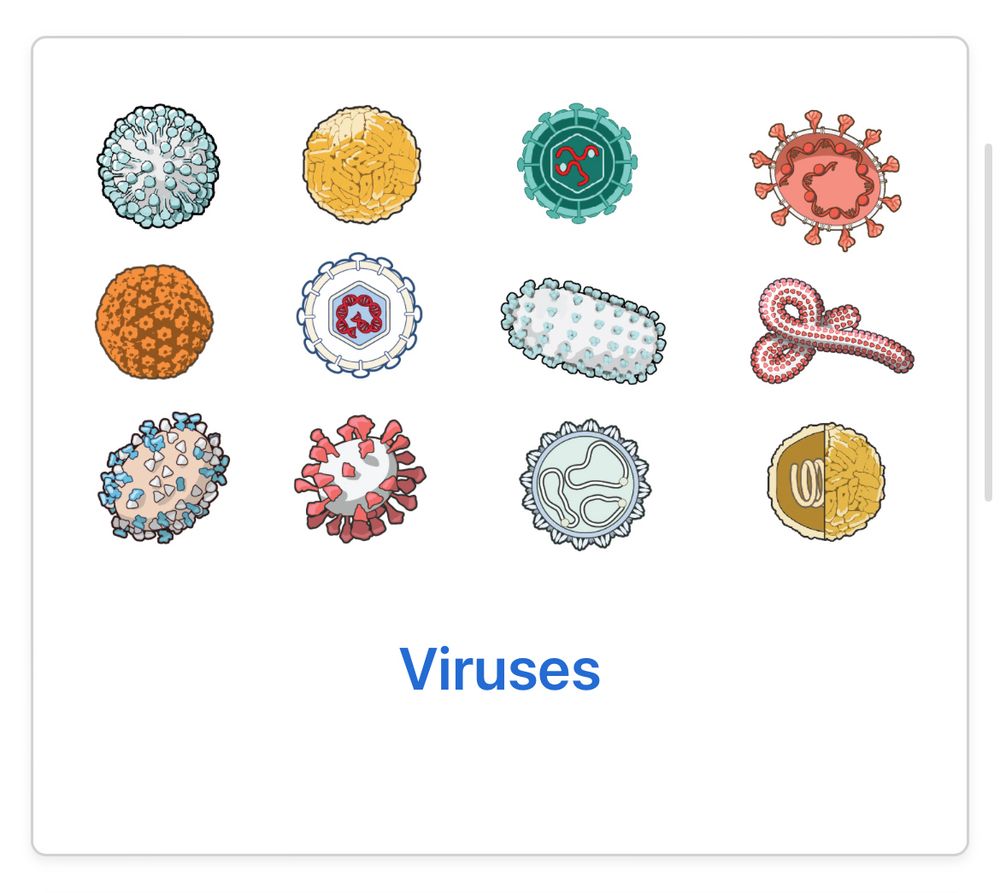
Discovery, Optimization, and Anticancer Activity of Lipid-Competitive Pleckstrin Homology Domain-Containing Family A Inhibitors
Phosphoinositide signaling is a major cellular mechanism controlling cancer cell viability, proliferation, and survival. Yet, inhibition of lipid kinases that produce oncogenic phosphoinositides has afforded only a limited number of efficacious drugs attributed in large part to on-target toxicity resulting from the pleiotropic effects of these signaling lipids. Targeting the specific phosphoinositide effector pathways via competitive inhibitors of phosphoinositide-recognizing pleckstrin homology (PH) domains represents a relatively unexplored means to achieve greater specificity. Herein, we present the discovery from in silico screening, structure–activity relationship (SAR) optimization, and cellular characterization of novel phosphoinositide-competitive inhibitors of the pleckstrin homology domain-containing A (PLEKHA) family. These compounds induce cytotoxic effects in BRAF and NRAS mutant melanoma cells, consistent with on-target inhibition, and the most potent compound is activated by endogenous esterase activity, suggesting that prodrug esters represent a viable strategy for targeting the phosphoinositide-binding pockets of the PLEKHA family of PH domains.
A while back we found that the lipid-binding protein PLEKHA4 boosts Wnt/β-catenin signaling and drives melanoma growth in vivo. Now, we (Nathan Frederick) identify small-molecule inhibitors of PLEKHA4 & related proteins with anticancer activity in vitro! pubs.acs.org/doi/10.1021/....
07.10.2025 16:06 — 👍 11 🔁 4 💬 0 📌 1

Out today in @nature.com: Together with the Honigmann, Shevchenko, Drobot and Hof labs, we present a general workflow for imaging the localization and transport of individual lipids in cells and mapping their metabolism.
www.nature.com/articles/s41...
21.08.2025 05:18 — 👍 333 🔁 124 💬 31 📌 23
Thank you Jeremy!
21.08.2025 05:15 — 👍 1 🔁 0 💬 0 📌 0

Organelle-Targeted Laurdans Measure Heterogeneity in Subcellular Membranes and Their Responses to Saturated Lipid Stress
Organelles feature characteristic lipid compositions that lead to differences in membrane properties. In cells, membrane ordering and fluidity are commonly measured using the solvatochromic dye Laurdan, whose fluorescence is sensitive to lipid packing. As a general lipophilic dye, Laurdan stains all hydrophobic environments in cells; therefore, it is challenging to characterize membrane properties in specific organelles or assess their responses to pharmacological treatments in intact cells. Here, we describe the synthesis and application of Laurdan-derived probes that read out the membrane packing of individual cellular organelles. The set of organelle-targeted Laurdans (OTL) localizes to the ER, mitochondria, lysosomes, and Golgi compartments with high specificity while retaining the spectral resolution needed to detect biological changes in membrane ordering. We show that ratiometric imaging with OTLs can resolve membrane heterogeneity within organelles as well as changes in lipid packing resulting from inhibition of trafficking or bioenergetic processes. We apply these probes to characterize organelle-specific responses to saturated lipid stress. While the ER and lysosomal membrane fluidity is sensitive to exogenous saturated fatty acids, that of mitochondrial membranes is protected. We then use differences in ER membrane fluidity to sort populations of cells based on their fatty acid diet, highlighting the ability of organelle-localized solvatochromic probes to distinguish between cells based on their metabolic state. These results expand the repertoire of targeted membrane probes and demonstrate their application in interrogating lipid dysregulation.
The 4 chemically targeted Laurdan derivatives (for mitochondria, ER, lyso/endosomes, and the Golgi) that we published last year are now available (at a pretty reasonable price) from Avanti Polar Lipids (cat #880194, 880197, 880193, 880196). These have been very popular! pubs.acs.org/doi/full/10....
15.08.2025 15:57 — 👍 47 🔁 14 💬 1 📌 1
@harayamajrlab.bsky.social @reynders.bsky.social @acs.org @acsbiol.bsky.social @caltechcce.bsky.social @pennchemistry.bsky.social #lipidtime #chembio #molswitch #chemsky
14.08.2025 10:43 — 👍 2 🔁 0 💬 0 📌 0
Thrilled to have our story on the regulation of lysosomal lipids out in @cp-cellmetabolism.bsky.social! The work was led by two outstanding grad students Jess Davidson and Raghav Jain probing mechanistic control of energy expenditure @hhmi.org @uwbiochem.bsky.social
15.05.2025 12:06 — 👍 46 🔁 17 💬 1 📌 0

Why are biological membranes asymmetric, with different lipids in the two bilayer leaflets? Discovered in the 70s, lipid asymmetry is linked to many cellular processes, but why the cell needs it is largely unclear. @pavelbarahtjan.bsky.social addresses this question: www.biorxiv.org/content/10.1...
06.05.2025 09:01 — 👍 120 🔁 49 💬 6 📌 7

Engineered Proteins and Chemical Tools to Probe the Cell Surface Proteome
The cell surface proteome, or surfaceome, is the hub for cells to interact and communicate with the outside world. Many disease-associated changes are hard-wired within the surfaceome, yet approved drugs target less than 50 cell surface proteins. In the past decade, the proteomics community has made significant strides in developing new technologies tailored for studying the surfaceome in all its complexity. In this review, we first dive into the unique characteristics and functions of the surfaceome, emphasizing the necessity for specialized labeling, enrichment, and proteomic approaches. An overview of surfaceomics methods is provided, detailing techniques to measure changes in protein expression and how this leads to novel target discovery. Next, we highlight advances in proximity labeling proteomics (PLP), showcasing how various enzymatic and photoaffinity proximity labeling techniques can map protein–protein interactions and membrane protein complexes on the cell surface. We then review the role of extracellular post-translational modifications, focusing on cell surface glycosylation, proteolytic remodeling, and the secretome. Finally, we discuss methods for identifying tumor-specific peptide MHC complexes and how they have shaped therapeutic development. This emerging field of neo-protein epitopes is constantly evolving, where targets are identified at the proteome level and encompass defined disease-associated PTMs, complexes, and dysregulated cellular and tissue locations. Given the functional importance of the surfaceome for biology and therapy, we view surfaceomics as a critical piece of this quest for neo-epitope target discovery.
Excited to share that our cell surface proteome review is now online on Chemical Reviews! 🥰 We highlight recent advances of techniques mapping cell surface protein expression, protein-protein interactions, extracellular PTMs and MHC complexes. @jimwellsucsf.bsky.social pubs.acs.org/doi/10.1021/...
04.04.2025 20:19 — 👍 49 🔁 10 💬 2 📌 1
Congratulations on the Eli Lilly Award Brian!
27.03.2025 04:20 — 👍 1 🔁 0 💬 1 📌 0
Great to see you Jeremy - congratulations on the ACS Chem Biol Young Investigator Award!!
26.03.2025 04:18 — 👍 10 🔁 0 💬 1 📌 0
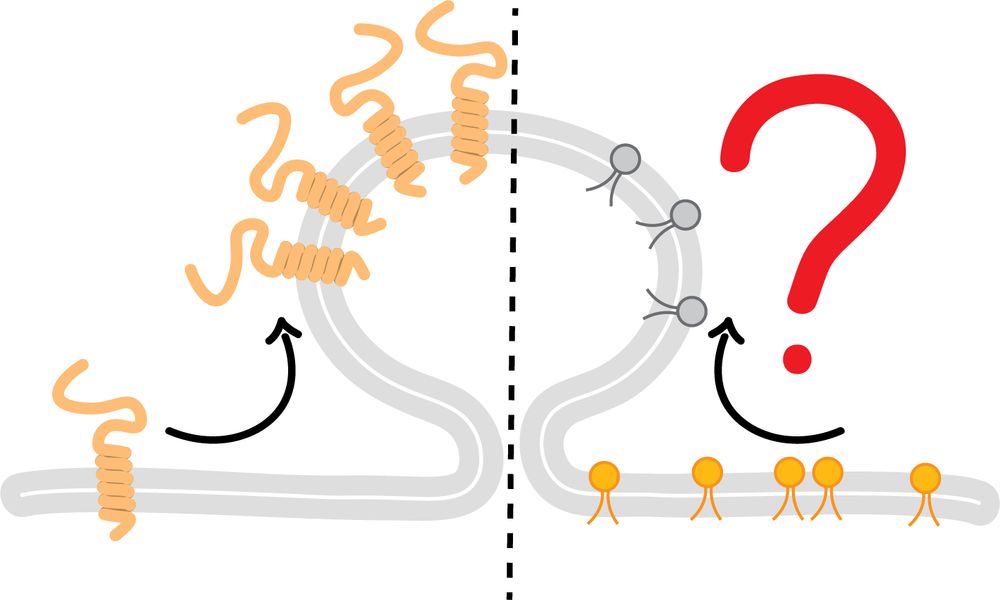
Are lipids actively sorted during clathrin mediated endocytosis like proteins? @mathilda95.bsky.social addresses this key open question together with our collaborators from the Honigmann and Modes labs using a new Lipid-STED workflow.
www.biorxiv.org/content/10.1...
10.03.2025 11:56 — 👍 115 🔁 38 💬 2 📌 9
Yes for deep red I was thinking 640
01.03.2025 17:15 — 👍 0 🔁 0 💬 0 📌 0
For me this would probably cover 80-90% of my organelle staining dye needs - I wonder what other people doing live cell imaging think? Thanks for considering this Luke! Hoechst would also be great but I think it’s a bit more affordable.
01.03.2025 16:28 — 👍 0 🔁 0 💬 1 📌 0
ER and Mitochondria would be great! I think Lysosome and PM would also be very useful. With a suit of ER, Mito, Lyso, and PM in two colors e.g. green and deep red (8 dyes total) one could mix and match any and also have flexibility to pair with anything else in either green or red.
01.03.2025 16:28 — 👍 0 🔁 0 💬 1 📌 0
Thank you Luke! Organelle tracking dyes come to mind. Getting a full suit of them and different colors easily costs thousands $
01.03.2025 15:16 — 👍 4 🔁 0 💬 1 📌 0
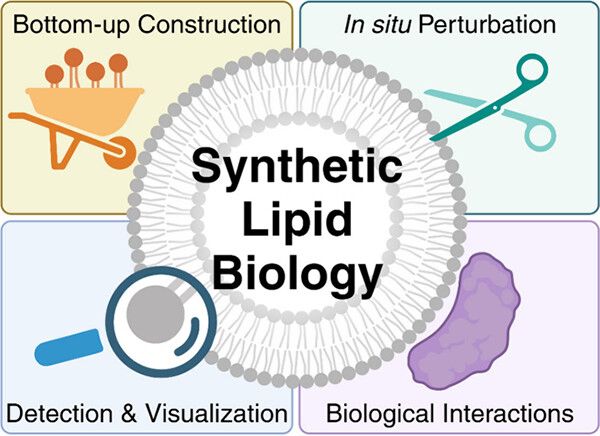
table of contents graphic for review titled synthetic lipid biology
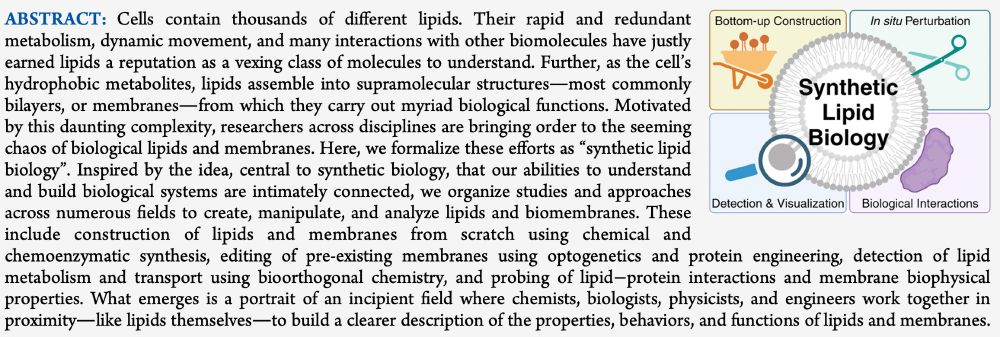
abstract of review article

Po-Hsun Brian Chen
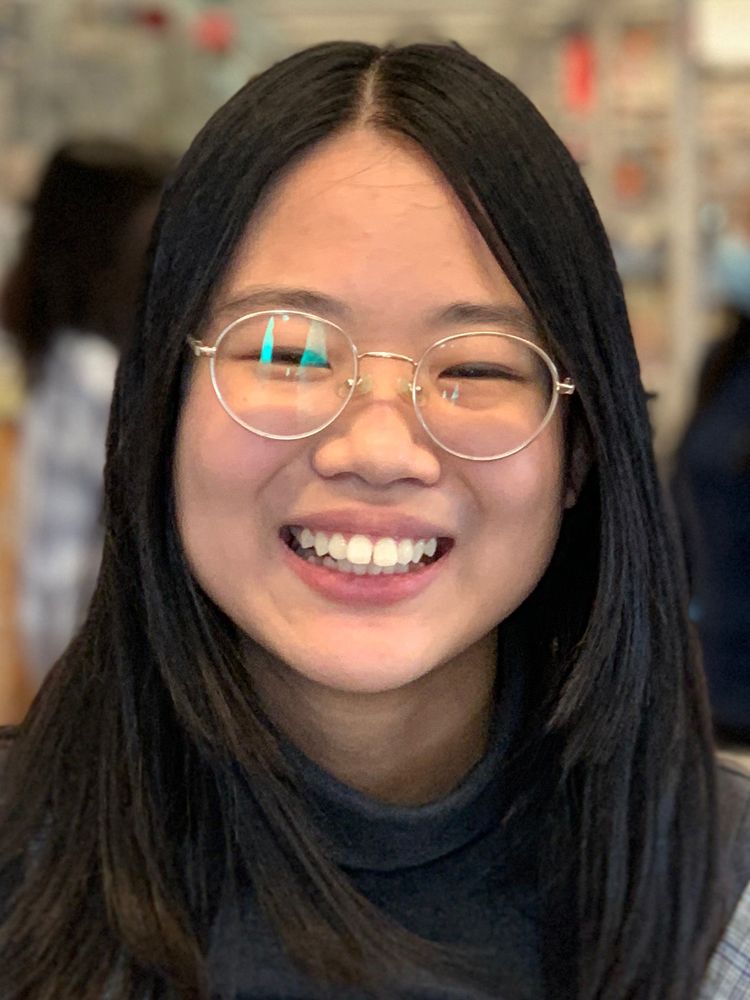
Xiang-Ling (Julia) Li
Overjoyed and honestly relieved to share a Chem Rev magnum opus from Brian Chen & Julia Li titled Synthetic Lipid Biology! In it, we organize efforts across numerous fields to create, manipulate, and analyze lipids and biomembranes. Check it out! doi.org/10.1021/acs.... #lipidtime #chemsky #chembio
14.01.2025 13:49 — 👍 88 🔁 25 💬 8 📌 3

Please consider making a contribution to this special fund that will be used by Caltech and JPL to directly support affected individuals and their families greatly impacted by this week's devastating fires in Southern California.
giving.caltech.edu/areas-to-sup...
12.01.2025 18:38 — 👍 22 🔁 10 💬 0 📌 0
Great study & very useful tool! Congrats Reika!
04.12.2024 21:25 — 👍 1 🔁 0 💬 1 📌 0
Congratulations!!
04.12.2024 01:23 — 👍 1 🔁 0 💬 1 📌 0
Thank you very much Sarah!! Unfortunatley not making it to BPS but hope to see you at another conference soon!
26.11.2024 16:50 — 👍 0 🔁 0 💬 0 📌 0
Welcome to Bluesky! I created a starter pack for medicinal chemistry. Please comment/share and let me know if you wish to be added to the starter pack.
go.bsky.app/8JRwAao
18.11.2024 11:13 — 👍 47 🔁 19 💬 19 📌 1
Would be happy to be added!
19.11.2024 05:08 — 👍 1 🔁 0 💬 1 📌 0
Ok, trying to bring my community back together... I created a starter pack for lipids and membrane protein aficionados!
Feel free to share, add and distribute, so we can come together again! 😍
go.bsky.app/AEeXh86
16.11.2024 03:53 — 👍 125 🔁 67 💬 71 📌 7
Great community! Would be happy to be added if you are starting a second list.
19.11.2024 04:15 — 👍 0 🔁 0 💬 1 📌 0
👩🏽🔬PhD | Medicinal Chemist | @bionatural.bsky.social
🎓Assistant Professor | ULusófona
💊Drug discovery: Cancer | Malaria | Tuberculosis | Autoimmune diseases
✨Shifting and expanding research focus toward Women’s health
Committed to a meaningful impact
Asst Prof @UCLA ☀️
Metabolism, mass spec, and stable isotope tracing ❤️ new PI and new mom ✨
teslaalab.com
Assistant professor of Chemical Engineering at USC in Los Angeles. My research group focuses on protein-lipid biophysics and biological membrane engineering.
Decoding how the gut thinks 🦠🪱🧠💪
Neuroscientist with interests in
#EnergyMetabolism #EntericNeurons #Fats
@crick.ac.uk @institutducerveau.bsky.social
Research director at CNRS 🇨🇵 | RDP laboratory | @ERC research | Plant cell biology | cytoskeleton | phosphoinositides | biophysics 🌿🧪🧫🔬🧬 | Passionate about cell division 🤓
#FemmesetSciences
Inclusive working environment, we are hiring!
Boya Postdoctoral Fellow @PKU | formally @corrylab.bsky.social, ANU
MD simulations of lipids and membrane proteins
Like PIP2, I am negatively charged in the head
Professor in the Department of Chemistry at UC Irvine. My research focuses on the chemistry and biology of peptides, with particular interests in Alzheimer's disease, antibiotics, and the supramolecular chemistry of β-sheets: http://tinyurl.com/nowickgroup
Else Kröner Fresenius Professor & Chair of Translational Nutritional Medicine, Technical University of Munich | PI @LMU_Uniklinikum @HelmholtzMunich | Former @Harvard @MET_HSPH @gshlab @UKEHamburg
Homepage: https://www.mls.ls.tum.de/tnm
German scientific society for all those interested in biochemistry, molecular biology, biomedicine, biotechnology, cell biology, genetics...
Professor at the University of Victoria. Structural biologist studying phosphoinositides, membrane signalling, and nanobodies using HDX-MS, x-ray crystallography and cryo EM
🧪Studying how sphingolipids & membrane domains shape cell behavior
💊Into drug–membrane interactions & what lipids are doing behind the scenes
🌍 Founded the Sphingolipid Biology Network to connect researchers & share cool science
NIH K99/R00 MOSAIC Scholar, Reisman Lab Caltech | 2022 PhD Brown Lab IU | BS/BA Hope College | Organic chem 🧪 aspiring academic 👩🔬 avid reader 📚 she/her
Prof. of Organic Chemistry⚗️ CATALYSIS & more (membranes, on-surface-chemistry, batteries, data & machine learning). Passionate 👨🔬😀🇪🇺
PhD Candidate in Clemons lab @Caltech
Previous @UofToronto Biochemistry








